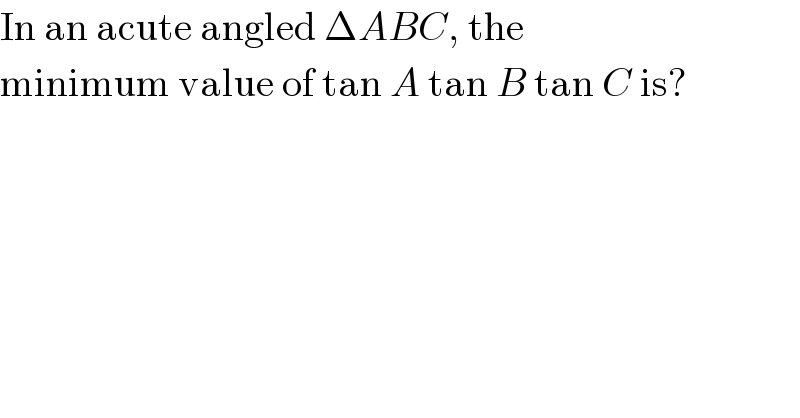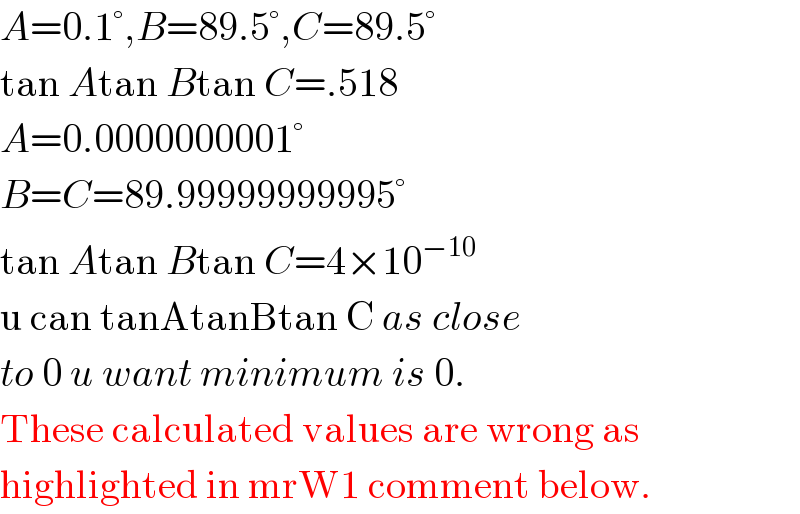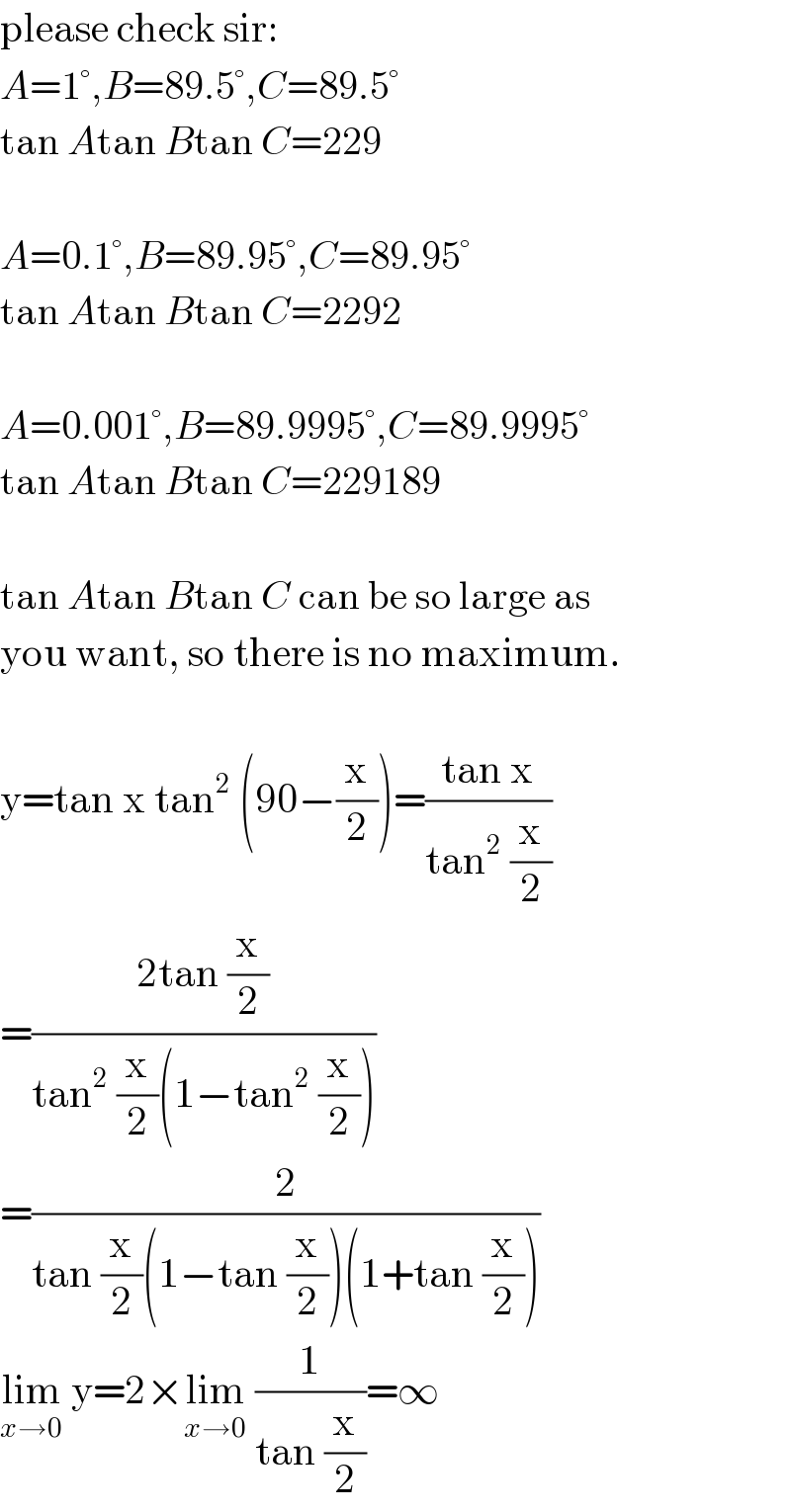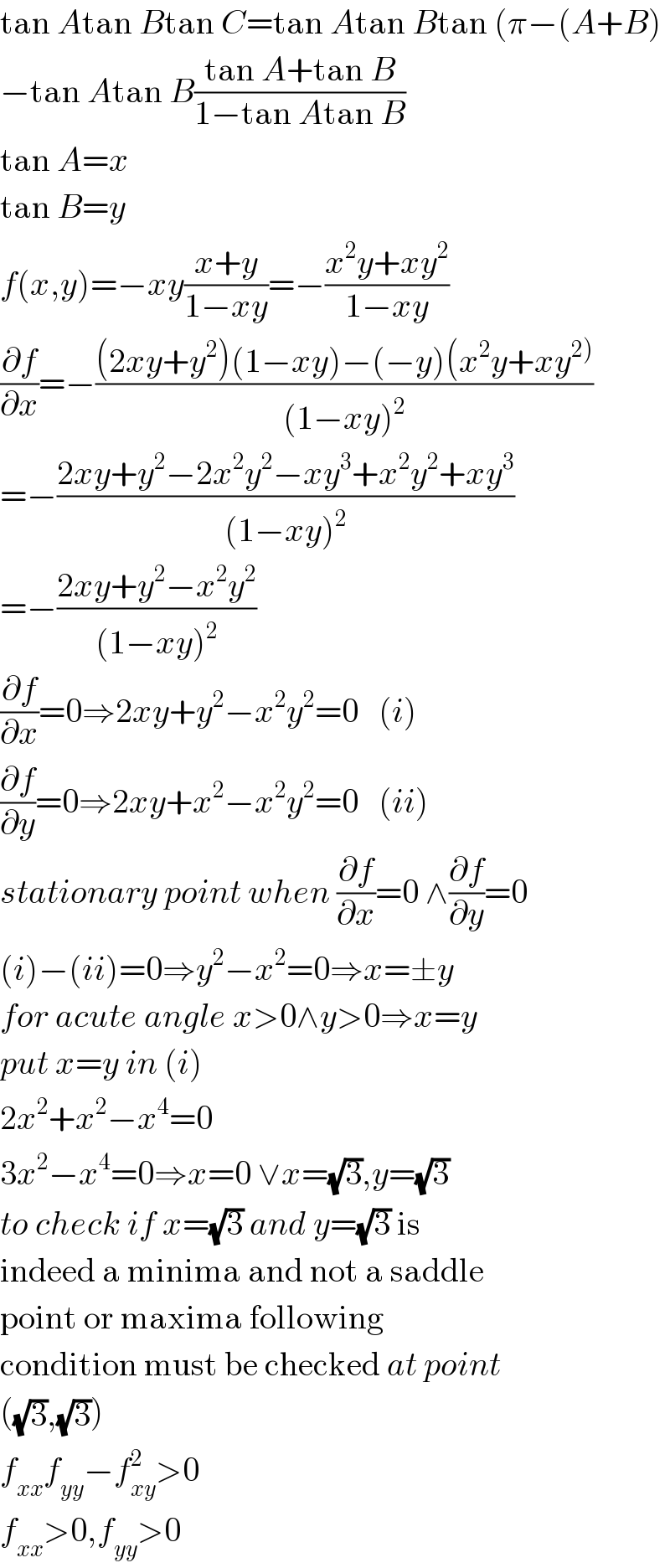
Question and Answers Forum
Question Number 15267 by Tinkutara last updated on 09/Jun/17

Commented by prakash jain last updated on 09/Jun/17

Commented by mrW1 last updated on 09/Jun/17

Commented by Tinkutara last updated on 09/Jun/17

Commented by prakash jain last updated on 09/Jun/17

Commented by prakash jain last updated on 10/Jun/17

Commented by mrW1 last updated on 09/Jun/17

Answered by mrW1 last updated on 09/Jun/17

Commented by Tinkutara last updated on 10/Jun/17

Answered by Tinkutara last updated on 12/Jun/17
![I found the best method: In any ΔABC, we have tan A + tan B + tan C = tan A tan B tan C = x (say) Now (x/3) ≥ (x)^(1/3) [∵ AM ≥ GM] (x^3 /(27)) ≥ x x ≥ 3(√3)](Q15583.png)
